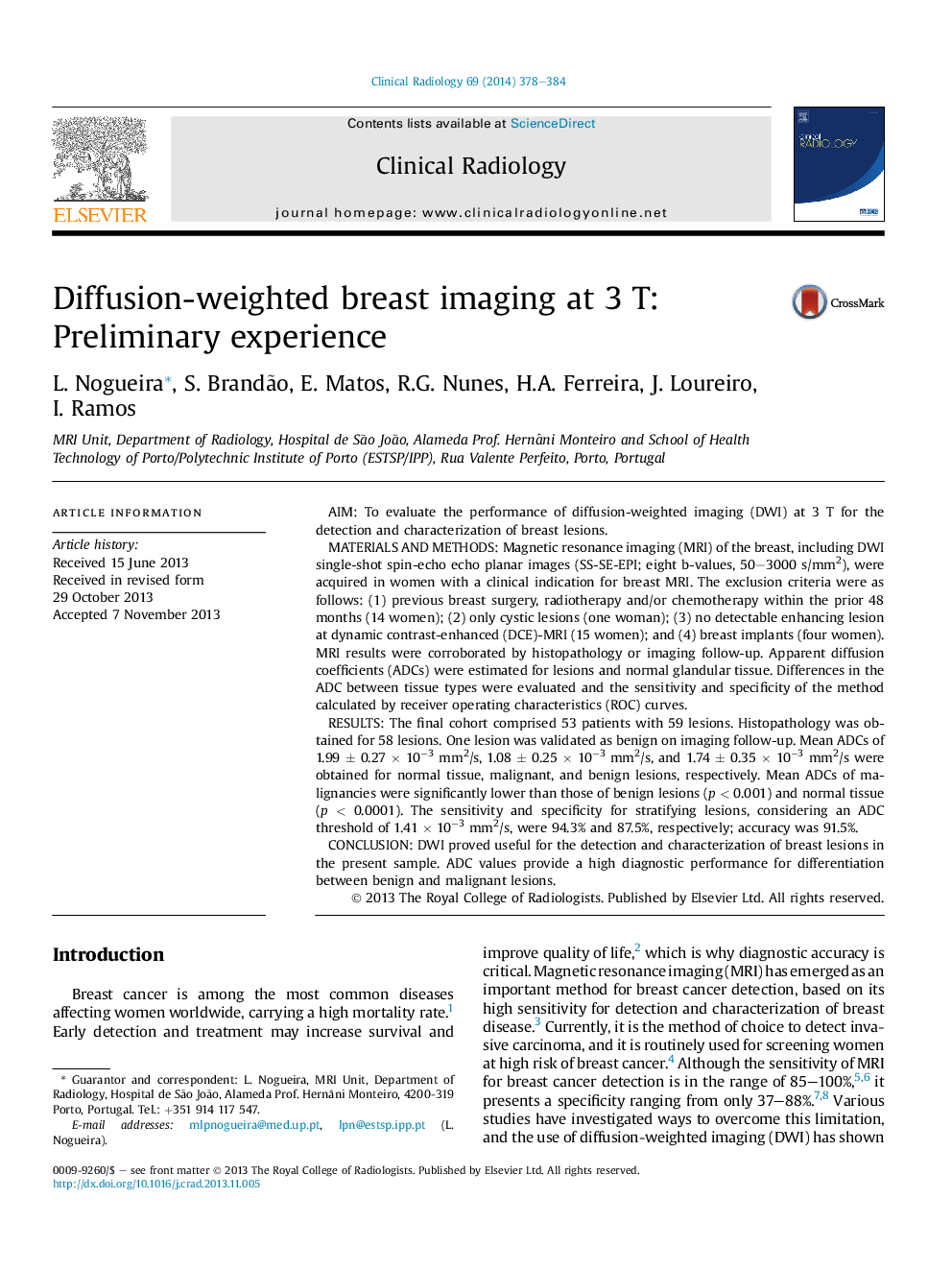| Article ID | Journal | Published Year | Pages | File Type |
|---|---|---|---|---|
| 3981626 | Clinical Radiology | 2014 | 7 Pages |
AimTo evaluate the performance of diffusion-weighted imaging (DWI) at 3 T for the detection and characterization of breast lesions.Materials and methodsMagnetic resonance imaging (MRI) of the breast, including DWI single-shot spin-echo echo planar images (SS-SE-EPI; eight b-values, 50–3000 s/mm2), were acquired in women with a clinical indication for breast MRI. The exclusion criteria were as follows: (1) previous breast surgery, radiotherapy and/or chemotherapy within the prior 48 months (14 women); (2) only cystic lesions (one woman); (3) no detectable enhancing lesion at dynamic contrast-enhanced (DCE)-MRI (15 women); and (4) breast implants (four women). MRI results were corroborated by histopathology or imaging follow-up. Apparent diffusion coefficients (ADCs) were estimated for lesions and normal glandular tissue. Differences in the ADC between tissue types were evaluated and the sensitivity and specificity of the method calculated by receiver operating characteristics (ROC) curves.ResultsThe final cohort comprised 53 patients with 59 lesions. Histopathology was obtained for 58 lesions. One lesion was validated as benign on imaging follow-up. Mean ADCs of 1.99 ± 0.27 × 10−3 mm2/s, 1.08 ± 0.25 × 10−3 mm2/s, and 1.74 ± 0.35 × 10−3 mm2/s were obtained for normal tissue, malignant, and benign lesions, respectively. Mean ADCs of malignancies were significantly lower than those of benign lesions (p < 0.001) and normal tissue (p < 0.0001). The sensitivity and specificity for stratifying lesions, considering an ADC threshold of 1.41 × 10−3 mm2/s, were 94.3% and 87.5%, respectively; accuracy was 91.5%.ConclusionDWI proved useful for the detection and characterization of breast lesions in the present sample. ADC values provide a high diagnostic performance for differentiation between benign and malignant lesions.
